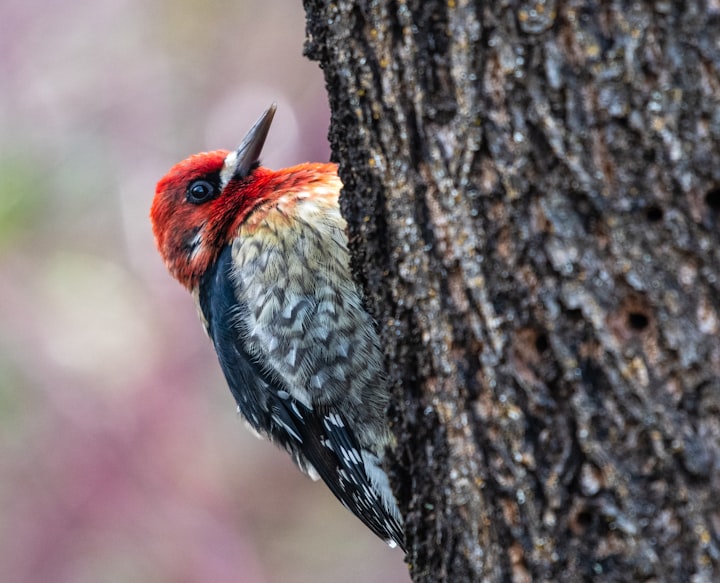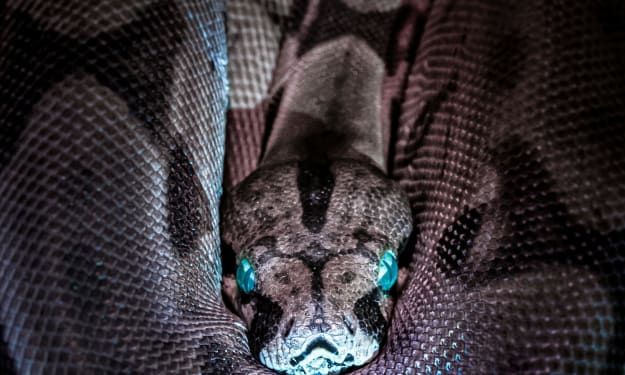Red-Crowned Woodpecker
a short read.

Recently, I was sent a photo showing a red-bellied woodpecker caught stealing a spotted woodpecker's nest. The male's bright red colour prompts the casual observer to call the bird "Red-headed Woodpecker," but a related, less common species, which actually has a completely red head, has already taken its name. Because the red-bellied woodpecker has so much red on his head People think their name should be "red-headed." The smaller woodpecker behaves similarly, with a yellow-red colour that is often not immediately visible, but the lighter red male causes the birds to be referred to as "red-headed" by casual observers.
Instead, the red-bellied woodpecker is named after the faint red of the rosé red, which is hard to see up close but not always easy to spot in the field. Red-bellied woodpeckers have a red belly, and their bellies are called instead of their heads, because they are not always the easy-to-see red fields.
The two characteristics that distinguish red-bellied woodpeckers from other species such as black-backed woodpeckers and - white or black-and-white, red-legged and blue- legged birds - are their red bellies and the fact that they are actually on their backs. The red-bellied woodpecker behaves like a red cap, that stretches from the neck of the beak to the beak of the male. Both the red-bellied woodpecker and the white-bellied woodpecker have a light area on the back of their bellies, and these light areas play a role in signalling.
One of the most obvious features of birds is a thick red stripe that extends from the bird's beak to the point where the black-and-white grid on its back begins. This colour, which is most commonly found on woodpecker plumage, is dominated by green, which is also found in some species in North America. The contrasting patterns of red and green on the bellies of red and white-bellied woodpeckers distinguish them from other bird species.
The Yellow-bellied woodpecker is the most common species of the Red-bellied Woodpecker in North America and the second largest species in the world. Other woodpecker species, such as the red and white-bellied woodpecker, the red-breasted woodpecker and many other species differ from RCW in their striking red on the head and the absence of black and white bars on the back.
The red bellies have a black and white pattern and are slightly reddish-pink on the hairy underside, which gave the woodpecker its name. They resemble the red-bellied woodpeckers of North America, such as the red-breasted woodpeckers and the yellow-bellied woodpeckers.
The woodpecker (Melanerpes erythrocephalus) is not the only species of the woodpecker in North America. Despite the name, the most visible part of the red bird is on the head and neck.
Although woodpeckers and yellow-bellied champers are ubiquitous in most states, they need a little more luck and stamina to find reliable bird feeders. Although rare for most of winter, they can be observed in large numbers in spring and summer and are found in many parts of North America. They are reliably found at bird feeders, but also on the leaves of trees, where their natural food source is to be found. In addition to the birds that feed the forest pecker, it can also be observed on tree trunks and under trees, where its excavations have benefited animals that benefit from the excavations, including birds of prey such as flying squirrels, owls, bats and other birds.
The Red-bellied Woodpecker, a woodpecker species, belongs to the genus Red and Yellow-bellied Champers and is native to the western United States as well as parts of Canada, Mexico and South America.
They have attacked and attacked the nests of many bird species, including chickens, wrens and various warblers. They are also nest predators and if suitable trees are not available, they dig a nest and use the cave dug by the woodpecker to dig a cavity. If their nesting hole is left, the nest can be used again as long as the bird nests in it.
Red-bellied woodpeckers also eat small vertebrates, including birds that nestle together, and small mammals such as squirrels, birds of prey and other small birds.
Woodpeckers, nuthatches and creepers are put into a category called the tree - clinging birds. Red-bellied woodpecker, brown-headed tit and tufted tit are among the species most commonly found in RCW cavities and can use normal, unenlarged cavities that could also be used by RCW. The most common are downy and hairy woodpeckers, but the large pillared pike also remains in many forests. Large - crested flycatchers, black and white owls and large - crested fly crows also nest in the same cavity as red-bellied snails.
Most woodpeckers in North America are tree birds in wooded habitats, but there are some species, such as the Gila woodpecker, that live in the desert and use cacti as breeding grounds. There are seven breeding species in Pennsylvania, and the Black-backed Woodpecker and some other species are occasional winter visitors.
About the Creator
Something Complicated
I’m the correct Something






Comments
There are no comments for this story
Be the first to respond and start the conversation.